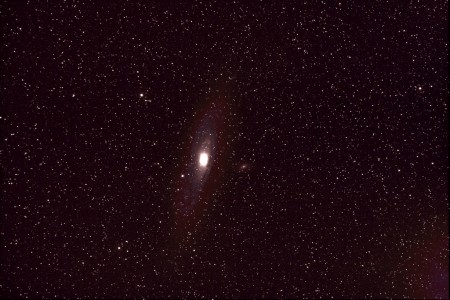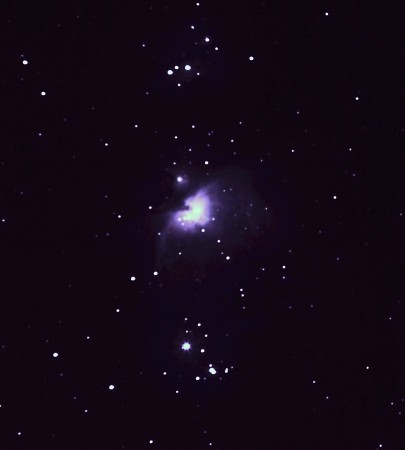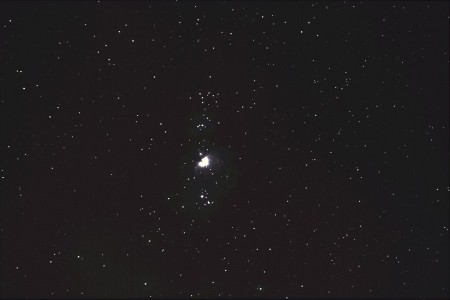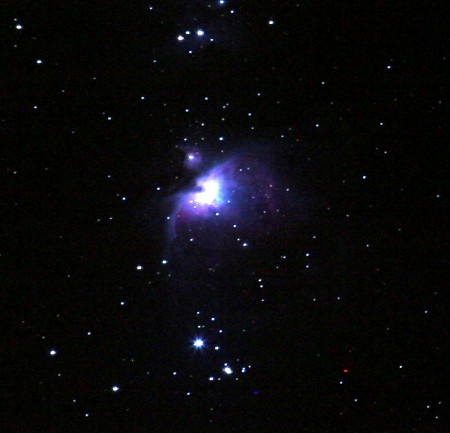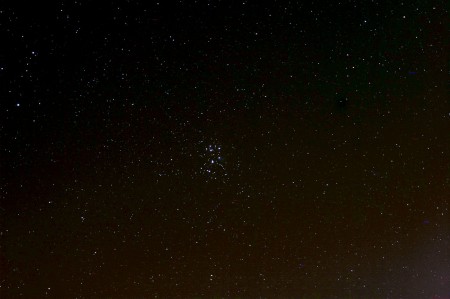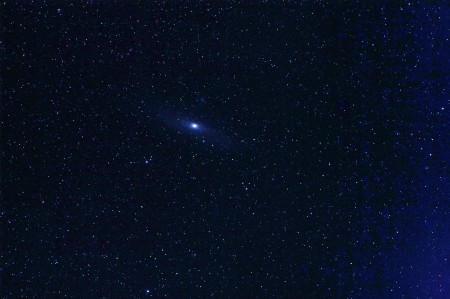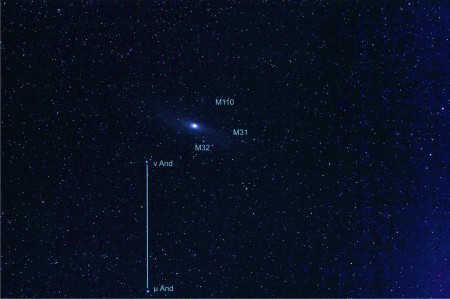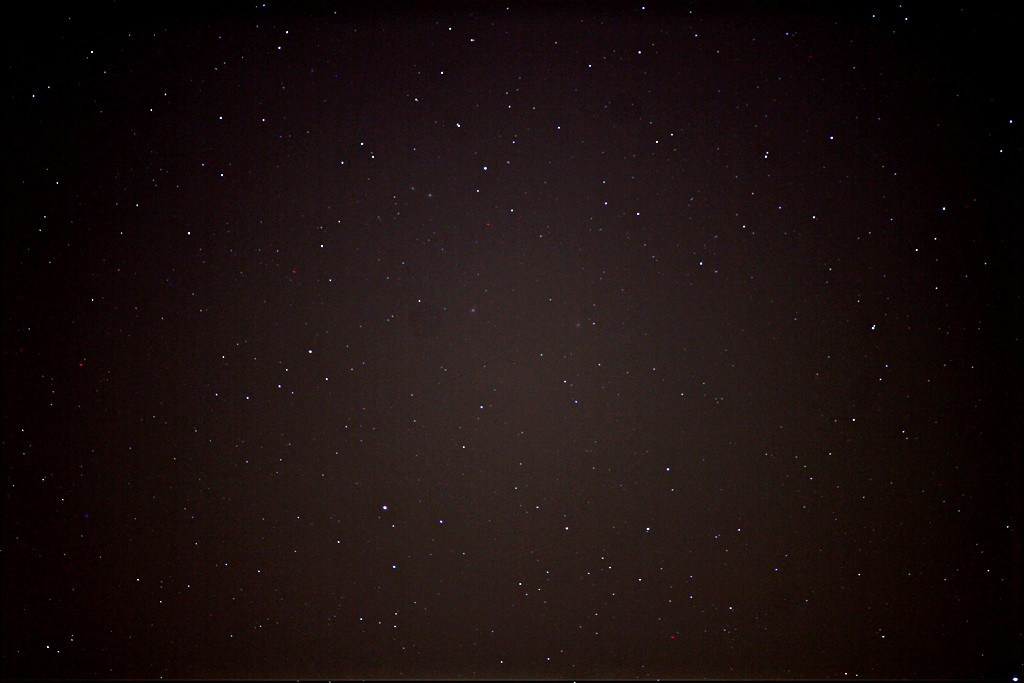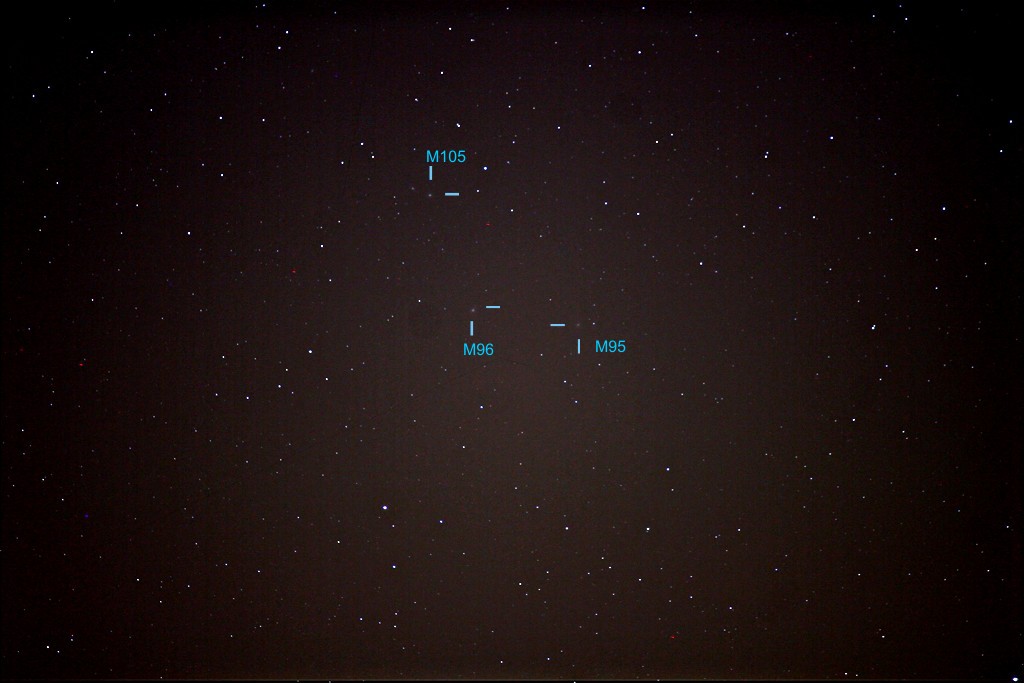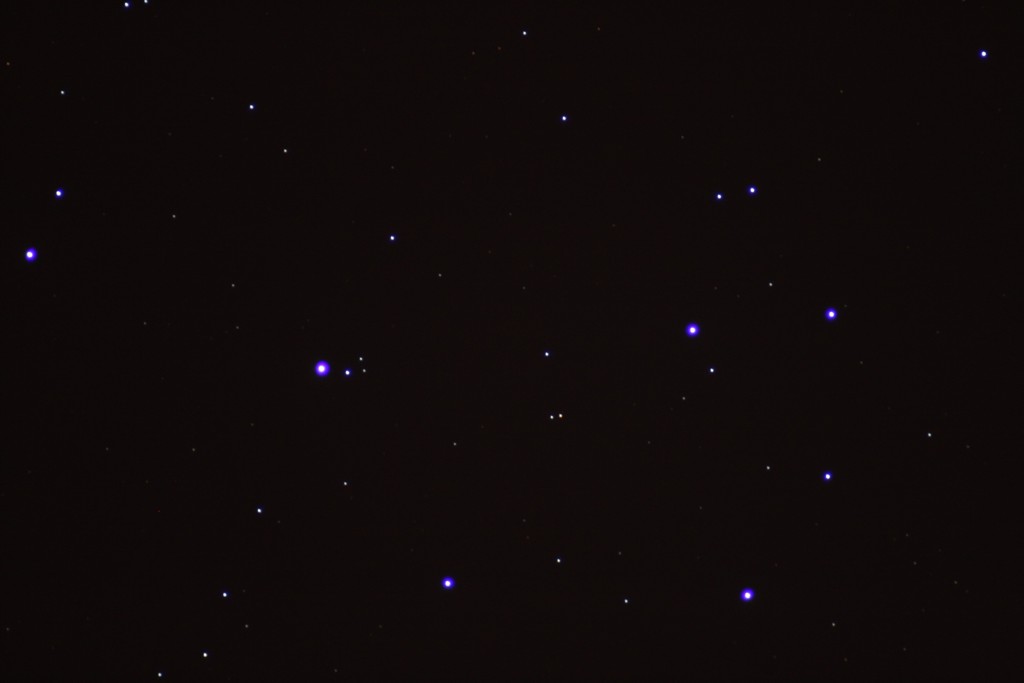200mm F/5.6 lens, 12x60s exposure at iso1600.
Tag: messier
Orion nebula (M42)
It seems like ages since the skies were clear last time. Must be around 2 months I think. Last evening however was good for astrophotography again. My target was the Orion nebula, or M42.
I took 40 sub-exposures, each 60s long, but half of them were out of focus :(, and a couple of the remaining ones had star-trailing due to vibration or me pushing the mount or something. The end result is a stack of 14 images, so 14 x 60s = 14min total exposure time. There is software out there to help with focusing, I'm looking at Nebulosity in particular. A DewNot dew-heater worked really well, no more problems with dew or frost on the lens.
Canon 20D wtih 70-400/4L lens set to 200mm and F/5.6: Unguided EQ-6 mount. Stacked with DeepSkyStacker with 10 dark frames (no flats or bias frames). The image above is a 100% crop, below is the full frame:
This site is about a 35min drive away. It allows exposing for 1-4 minutes at F/5.6. That's almost good enough, if you look at the "why autoguide" slides of Craig Stark's talk (especially the SNR plot at ca 7:20), it's clear that single exposures of a few minutes are required to reach good SNR.
The noise is supposed to be 1/sqrt(14)=3.7-fold lower in the stack above, but I'm not very impressed by how it looks compared to this single 60s frame:
Pleiades (M45)
The Pleiades shot with a Canon 20D and a 70-200/4L set to 73mm and F/5.6. A stack of 30 expousers, each 20s at iso800 (total exposure 30x20s = 10min). Unguided EQ-6 mount.
Andromeda galaxy (M31)
The Andromeda galaxy shot with a Canon 20D using a 70-200/4L lens set to 126mm and F/5.6. A stack of 17 frames at iso800, each exposed for 30 secods (total exposure 17x30s = 8.5 min). Unguided EQ-6 mount. A hint of M31's smaller companions M32 and M110 is visible.
M95, M96, and M105
A little left of Regulus and where Saturn is right now in Leo there's a group of three Messier objects: Two spiral galaxies M95 (magnitude 11.4), and M96 (magnitude 10.1), and an elliptical galaxy M105 (magnitude 10.2).
This is a stack of around ten 8 s exposures through an EF 70-200/4L set to 200mm and full aperture. Resolving details from the galaxies will require a longer focal length and much longer total exposure time. Focus is pretty good, and stars appear as points even in the corners - but the image shows severe vignetting. I need to learn how to use flat-frames to correct for that.
For those of you that don't spot the galaxies immediately from the pic above :), below I've indicated their positions:
Pleiades (M45)
30s exposure at ISO400 of the Pleiades. Again some light clouds rolling in around 22:30 preventing further photos...
